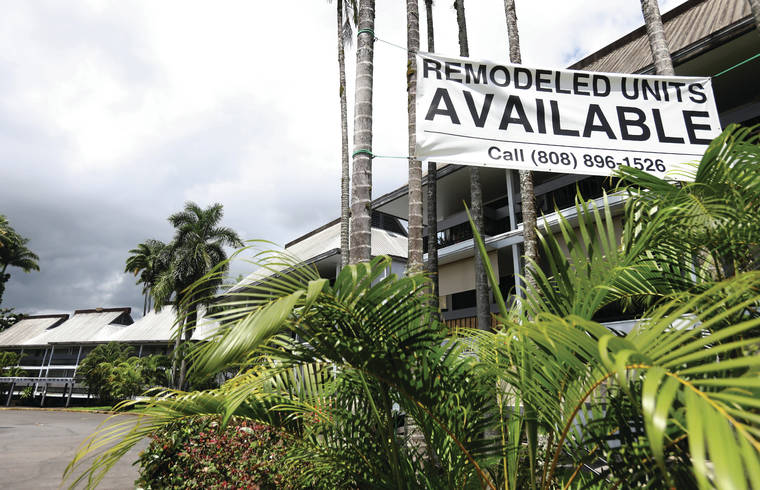A new state program providing $100 million of rental assistance to struggling tenants has been wildly popular since being established last week.
Hawaii’s Rent Relief and Housing Assistance Program, which began Sept. 8, provides rental assistance of up to $1,500 per month to neighbor island residents struggling to make rental payments during the COVID-19 pandemic.
Presently, the program pays out rental assistance funds for rental payments between Aug. 1 and Dec. 28. Later this month, that program will expand to include assistance for delinquent rent and mortgages as far back as March 1.
“Our phones … have been ringing off the hook,” said Denise Iseri-Matsubara, executive director of the Hawaii Housing Finance and Development Corporation. “The new website has had over 80,000 hits since it was launched. We’ve received … over 6,000 applications.”
Iseri-Matsubara said the program, which is managed by Catholic Charities Hawaii and Aloha United Way, has already been able to process some claims and disburse funds within the first week of its existence.
While other rental assistance programs have been available to state residents, the Rent Relief and Housing Assistance Program requires applicants to submit evidence that their household income does not exceed the area median income as determined by the U.S. Department of Housing and Urban Development, Iseri-Matsubara said.
Payments are also made directly to landlords or eligible primary residences in the state. Iseri-Matsubara said the only input required by the landlord is a confirmation of received payment.
Big Island residents can apply for the program through Catholic Charities Hawaii’s website at https://tinyurl.com/yyt6t88n.
Applicants are required to submit copies of a picture ID, Social Security card and pay stubs for all adults in the household, documentation of income loss, a lease or rental agreement and mortgage or homeowners association statements.
Nancy Cabral, owner of Day-Lum Rentals &Management Inc. in Hilo, said about 5% of her agency’s property owners have had to lower rents to accommodate tenants whose incomes have been reduced during the pandemic.
“We’ve done a lot of hard work in the last few years with being more selective with our tenants,” Cabral said, explaining that, out of Day-Lum’s 475 rentals, only two residential tenants are in arrears, while another handful of tenants have had some degree of rental assistance.
However, Cabral said one of those two problem tenants owes more than six months in back rent, and both have resisted mediation and other attempts to come to an agreement. Situations like this are common among other property management companies, she said, and are beginning to take tolls on property owners’ abilities to maintain their properties.
The possibility of a tenant staying on a property for months without paying — the state currently has a moratorium on evicting tenants for nonpayment of rent — is the reason why so many owners are instead choosing to lower rents, Cabral said.
“It’s easier to get 80% of rent now than to have to fight to get 100% of rent later on,” Cabral said.
Email Michael Brestovansky at mbrestovansky@hawaiitribune-herald.com.






